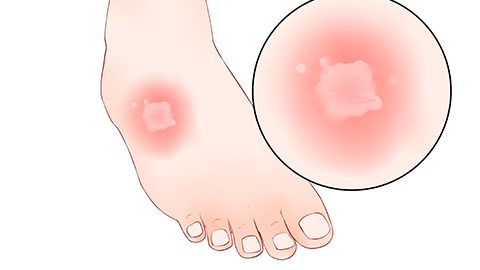What to do for a skin burn
For skin burns, initial management includes cooling the area with cold water, removing covering materials to protect the wound, avoiding application of any substances, covering with sterile dressings, and promptly replenishing fluids. If the burn is extensive, blisters have ruptured, or fever develops, immediate medical attention at a burn unit or emergency department is necessary.

1. Cooling with cold water: This is the first step after a burn. Flush the affected area with running cold water (15–25°C) for 15–20 minutes. This rapidly removes heat, minimizes further thermal damage to skin tissue, and helps relieve pain.
2. Removing covering materials to protect the wound: If clothing covers the burned area, carefully remove it after cooling with cold water. If the fabric adheres to the wound, do not forcibly peel it off. Leave the adhered portion in place to avoid causing secondary injury from tearing.
3. Avoid applying random substances: Do not apply toothpaste, soy sauce, vegetable oil, or similar substances to the burn. These can trap heat, increase the risk of infection, and interfere with the doctor’s assessment of the wound, potentially delaying proper treatment.
4. Covering with sterile dressing: Gently cover the burn with sterile gauze or a clean, breathable cloth. This helps prevent bacterial contamination, reduces the risk of infection, and protects the wound from irritation due to air exposure.
5. Replenishing fluids promptly: Burns may lead to fluid loss due to pain and wound exudate. Drinking warm water or light saline solution appropriately helps restore body fluids, maintain electrolyte balance, and support the healing process.
In daily care, keep the burn wound clean and dry, avoid friction or pressure on the area, change dressings regularly according to healing progress, maintain a light diet rich in protein and vitamins, monitor wound healing closely, and seek medical help promptly if any abnormalities occur.









